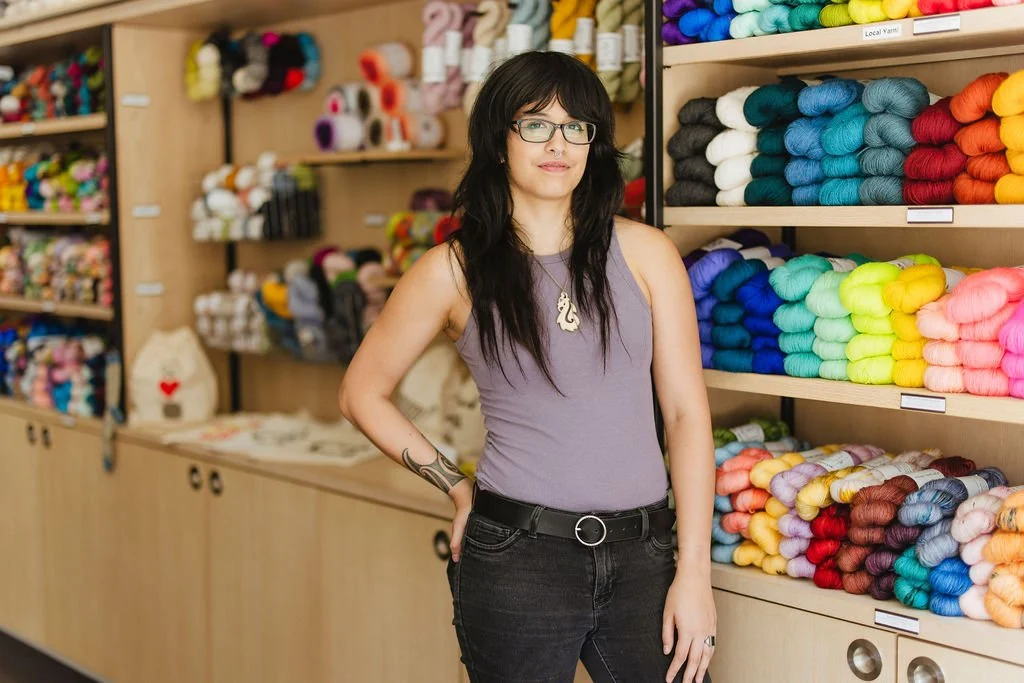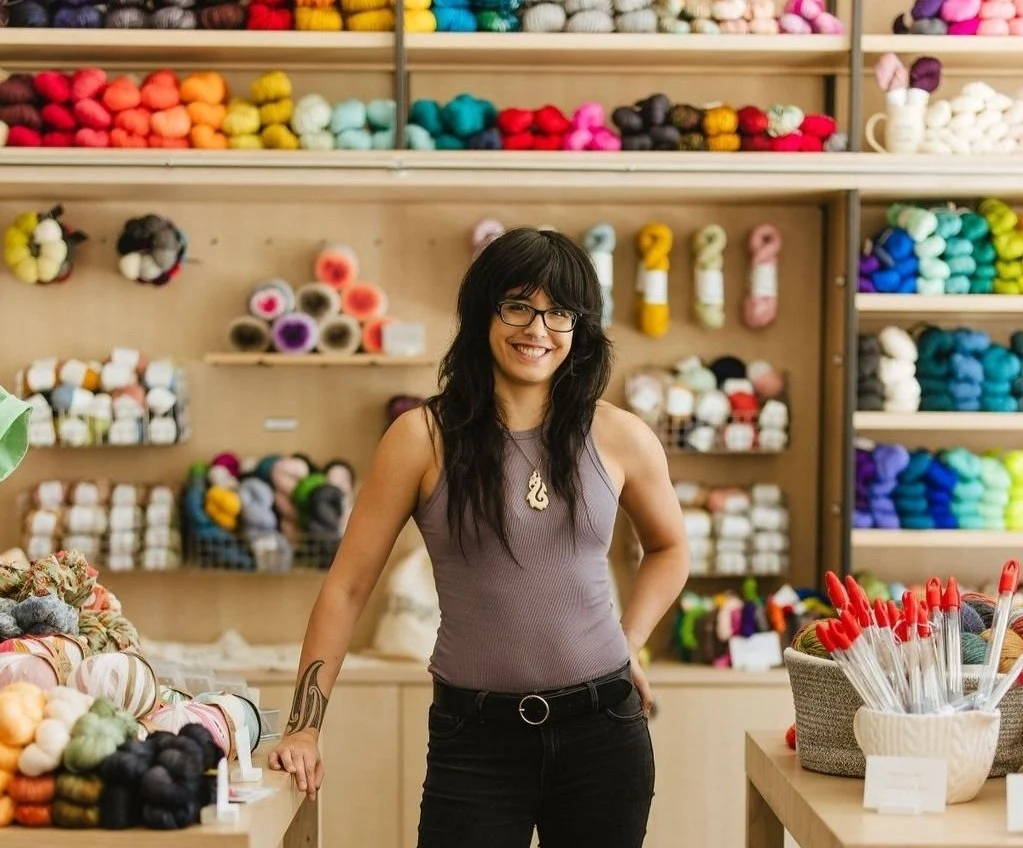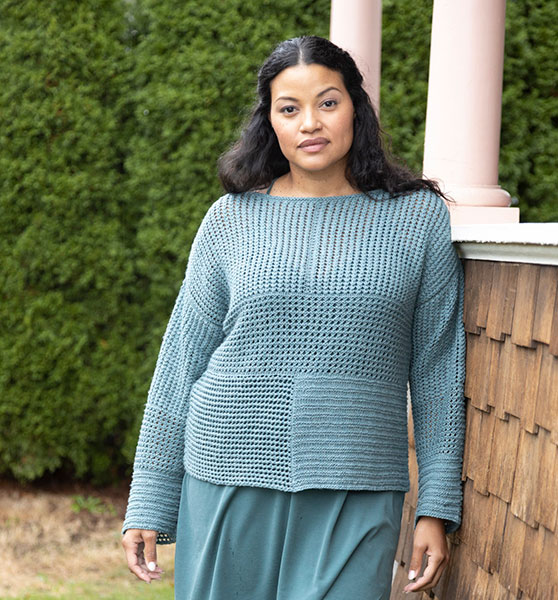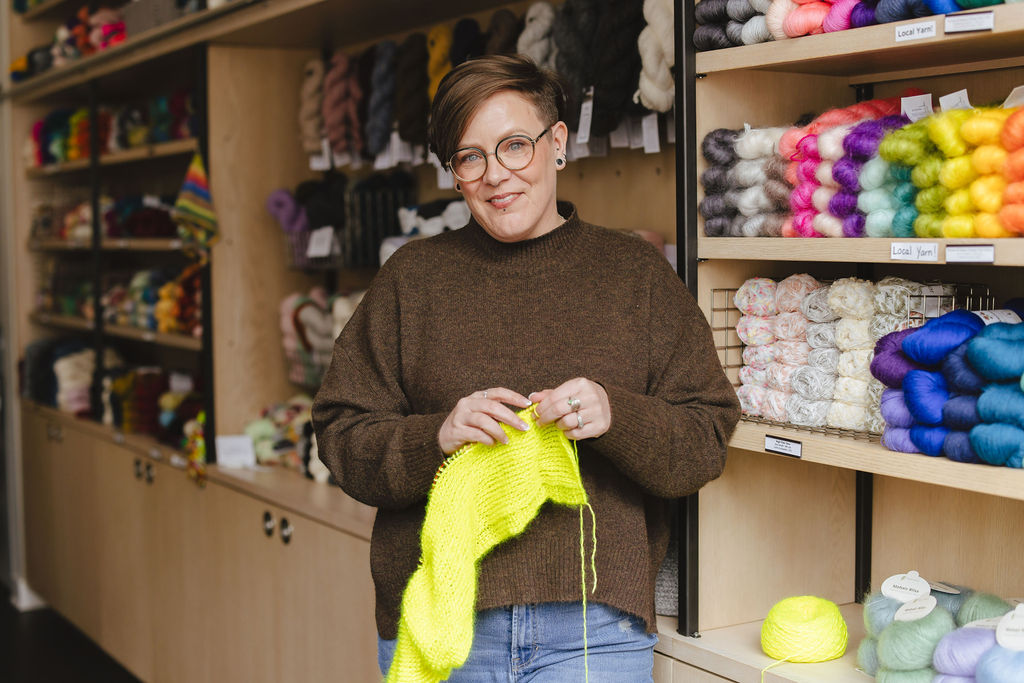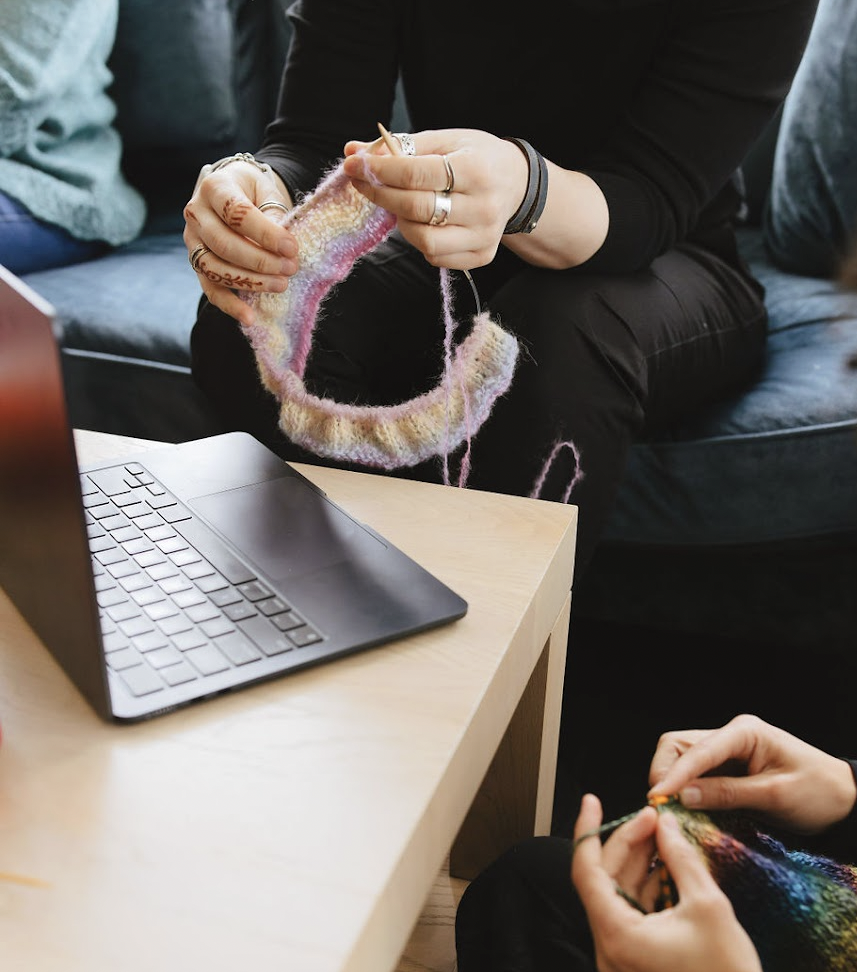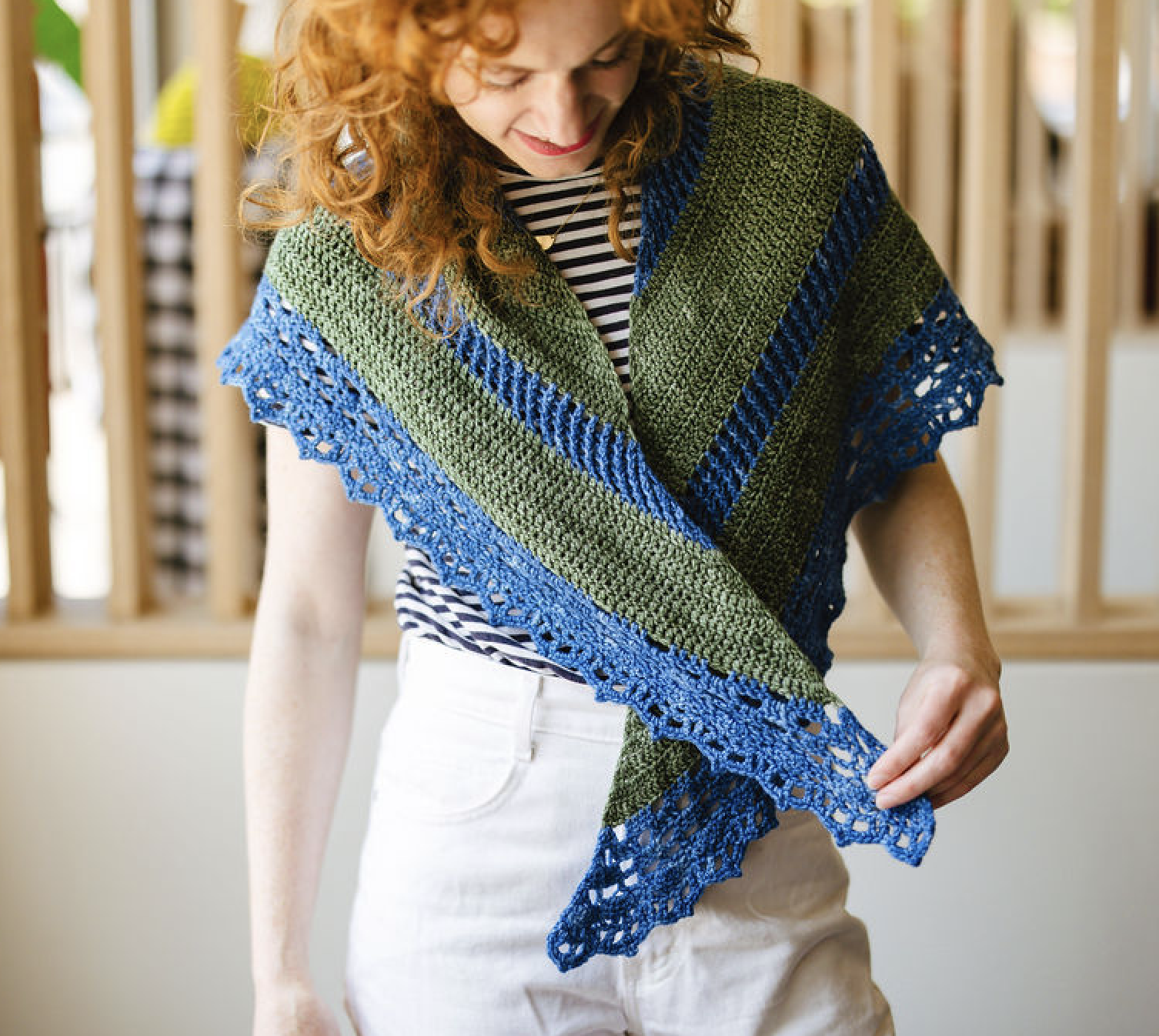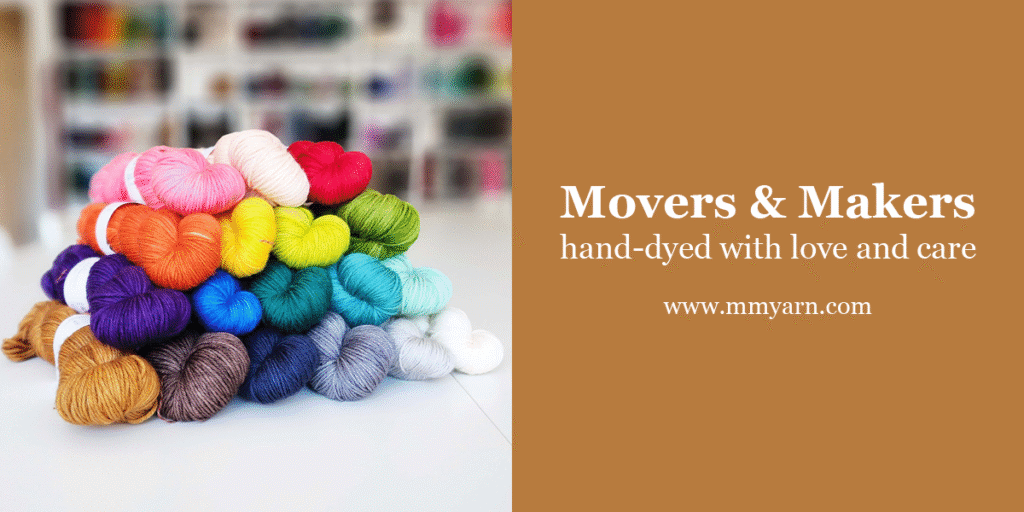We are thrilled to present a guest blog post written by Francoise Danoy, a talented knitwear designer and current participant in our gosadi Alpha program. In this insightful post, Francoise sat down with us and shared her unique design process called the SWATCH Framework, which she has developed to assist fellow designers on their creative journey. The SWATCH Framework encompasses six essential stages, each comprising various steps that can be customized to work for you!
The SWATCH Framework provides designers with a structured and efficient approach, guiding you from the initial idea to a polished, successful knitwear design. We invite you to dive into Francoise’s enlightening post and embark on your own design journey with her invaluable insights.
Take it away Frenchie!
the SWATCH framework
As a knitwear designer, I’ve developed my own unique design process called the SWATCH Framework, which I believe can be helpful for future designers. SWATCH is an acronym for the six main stages of my design process. Each stage consists of several steps that can be done in any order. Here, I will share my design journey with you.
s – spark
Whenever an idea comes to my mind, I immediately jot it down on paper or start drawing on my iPad. Once I decide to pursue a design further, I use a project management tool to create tasks for the design process. During this stage, I create mood boards on Pinterest and finalize the sketch of the shape, stitch patterns, and yarns that best represent the story I want to tell through my design.
w – work
This is one of the most intensive stages of the process, involving charting out stitch patterns, creating swatches, and figuring out the math behind the design. This stage helps to formalize the skeleton of the pattern, preparing it for the next phase.
a – application
During this stage, I begin knitting the sample and writing the pattern. It is crucial to ensure that all the elements from the work stage, such as math and skeleton, are in place before diving into pattern writing. This is when I include gauge, needle size, abbreviations, and charts to flesh out the pattern.
t – template
After knitting up the sample and writing the pattern, it’s time for test-making. Ideally, I should be writing the pattern while knitting the sample, but I often find myself forgetting some details from the sample that needs to be added later. At this point, I transfer the pattern to Google Docs for tech editing.
c – checking
During this stage, I have my tech editor review the Google Docs version of the pattern, checking for math, consistency, and correctness. After that, I move on to the testing phase, where I put the pattern into the actual layout, complete with graphic design, fonts, and photos. The test knitters ensure that the pattern is easy to read and follows a natural flow, as well as testing the actual product.
h – hustle
The final stage involves finalizing the pattern, working on marketing, and publishing it on platforms like Ravelry. This is the moment when all the hard work pays off, and the design is ready to be shared with the world.
The SWATCH Framework is a helpful guide for knitwear designers, providing a clear and organized approach to the design process. By following these stages, designers can ensure a smooth journey from an initial idea to a polished and successful knitwear design.
by Francoise Danoy
